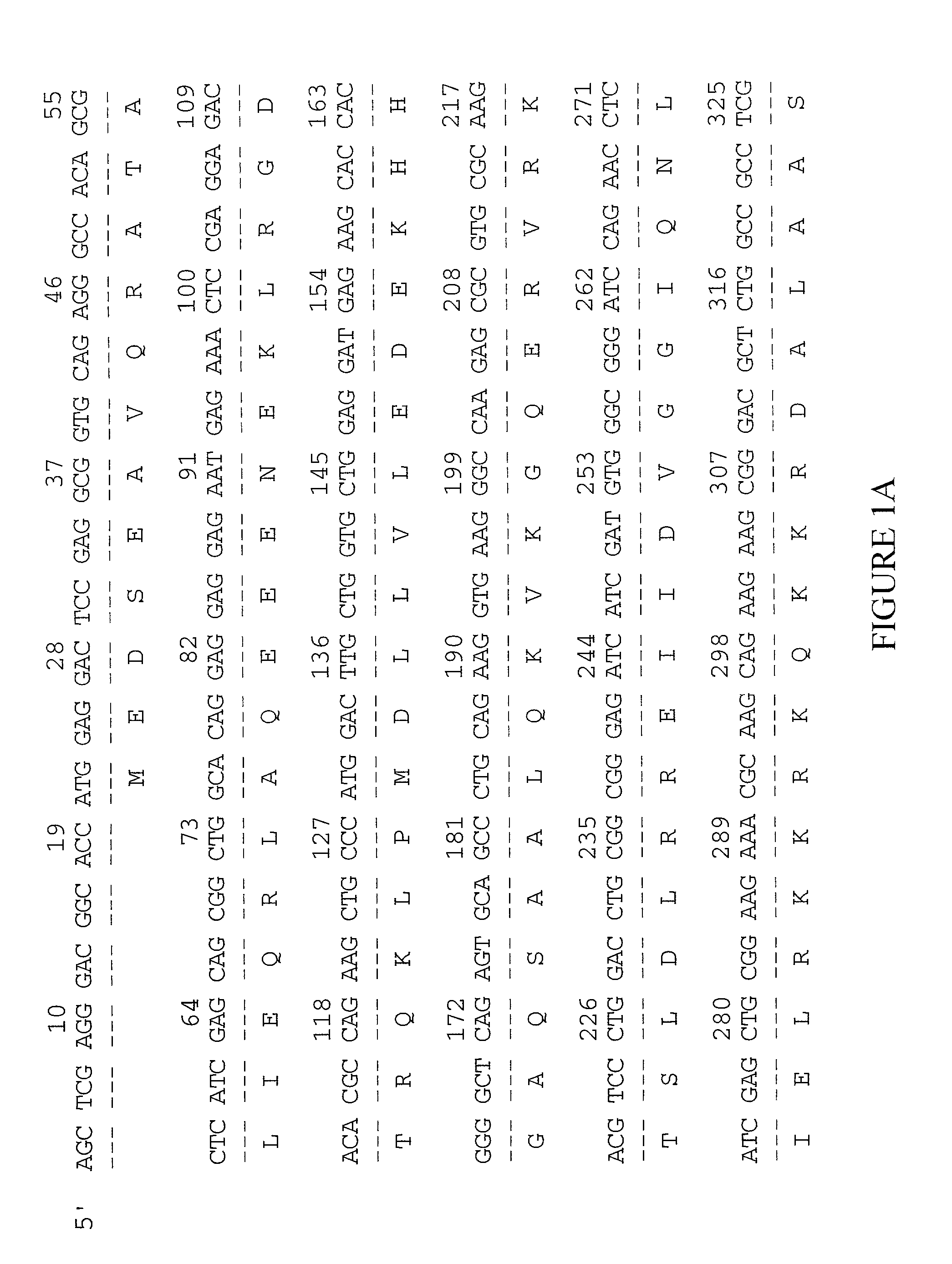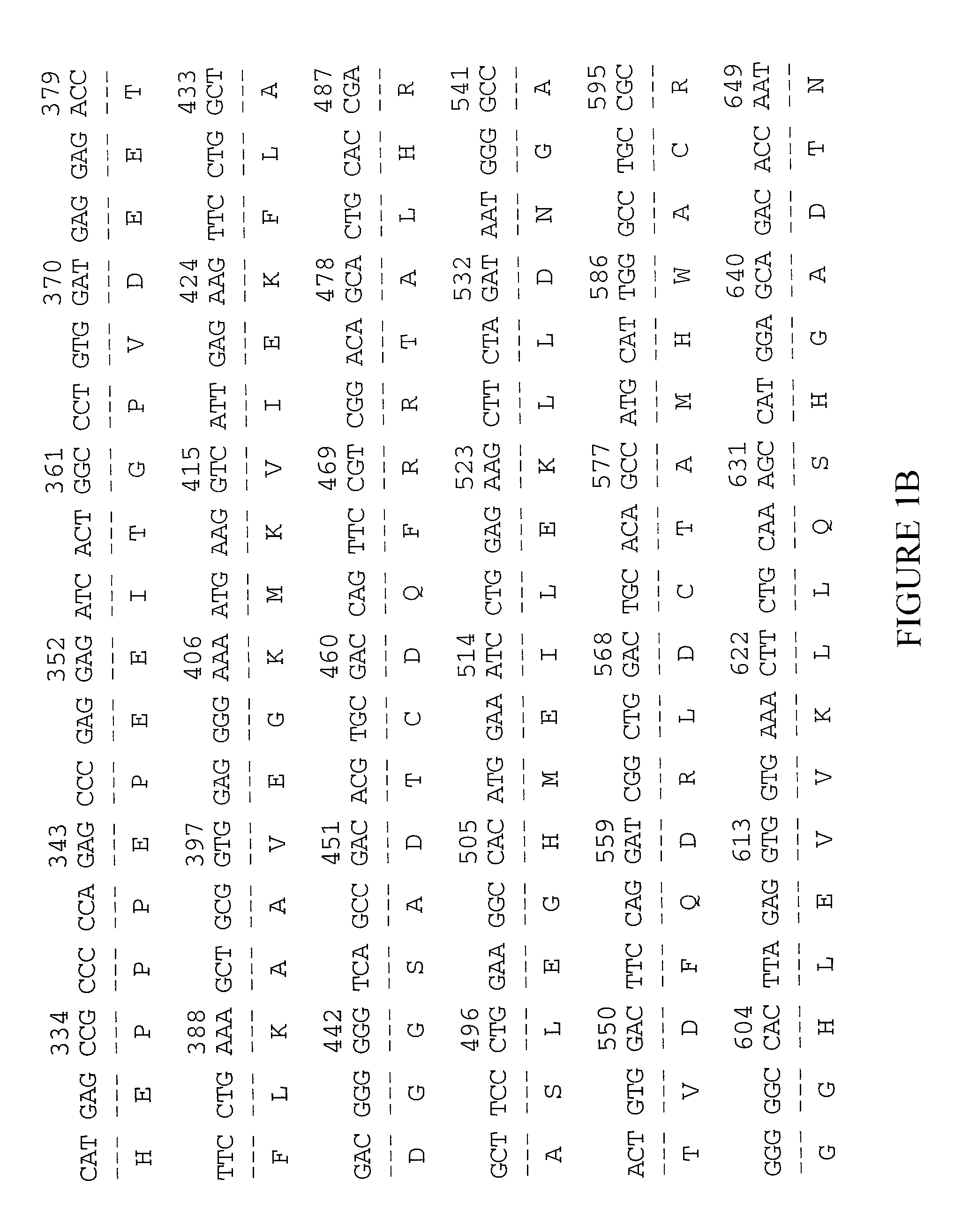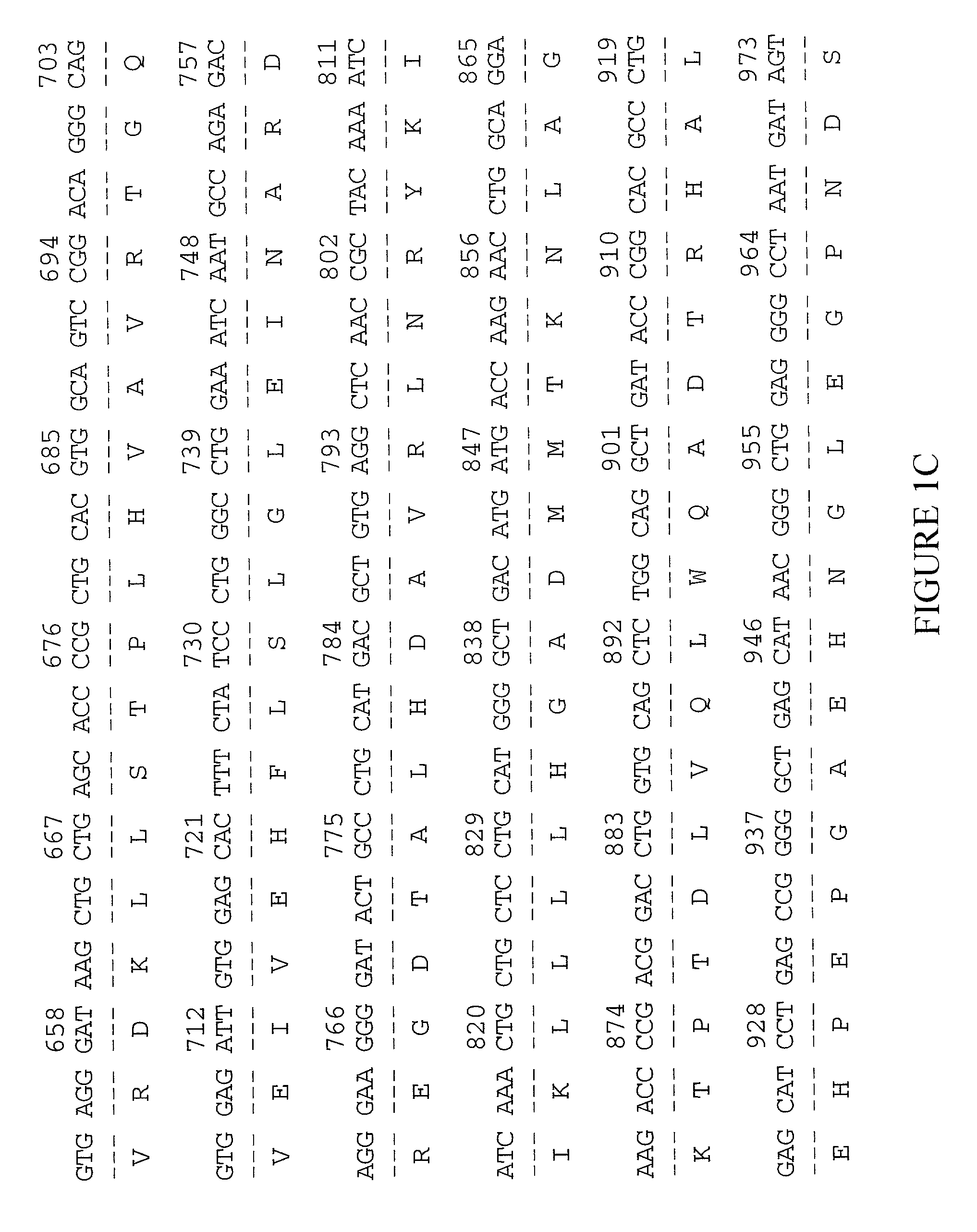Ankyrin repeat domain 2 protein variant
a technology of repeat domain and protein, applied in the field ofankyrin repeat domain 2 protein variant, can solve the problems of poor prognosis, difficult to differentiate clear cell sarcoma from malignant melanoma, irreversible heart muscle disease, etc., and achieve the effect of increasing the frequency of structural interactions and facilitating interaction with nucleic acids
- Summary
- Abstract
- Description
- Claims
- Application Information
AI Technical Summary
Benefits of technology
Problems solved by technology
Method used
Image
Examples
examples
[0133] The examples below are provided to illustrate the subject invention and are not included for the purpose of limiting the invention. For purposes of example, a preparation of the human musculoskeletal system (MUSCNOT10) will be described.
[0134] I cDNA Library Construction
[0135] The tissue used for muscle library construction was obtained from gluteal muscle tissue removed from a 43-year-old Caucasian female during soft tissue excision, partial ostectomy, and plastic skin repair. The frozen tissue was homogenized and lysed using a POLYTRON homogenizer (Brinkmann Instruments, Westbury N.J.). The reagents and extraction procedures were used as supplied in the RNA Isolation kit (Stratagene). The lysate was centrifuged over a 5.7 M CsCl cushion using an SW28 rotor in an L8-70M ultracentrifuge (Beckman Coulter, Fullerton Calif.) for 18 hr at 25,000 rpm at ambient temperature. The RNA was extracted once with phenol chloroform, pH 8.0; precipitated using 0.3 M sodium acetate and 2.5 v...
PUM
| Property | Measurement | Unit |
|---|---|---|
| pH | aaaaa | aaaaa |
| pH | aaaaa | aaaaa |
| humidity | aaaaa | aaaaa |
Abstract
Description
Claims
Application Information
 Login to View More
Login to View More - R&D
- Intellectual Property
- Life Sciences
- Materials
- Tech Scout
- Unparalleled Data Quality
- Higher Quality Content
- 60% Fewer Hallucinations
Browse by: Latest US Patents, China's latest patents, Technical Efficacy Thesaurus, Application Domain, Technology Topic, Popular Technical Reports.
© 2025 PatSnap. All rights reserved.Legal|Privacy policy|Modern Slavery Act Transparency Statement|Sitemap|About US| Contact US: help@patsnap.com



